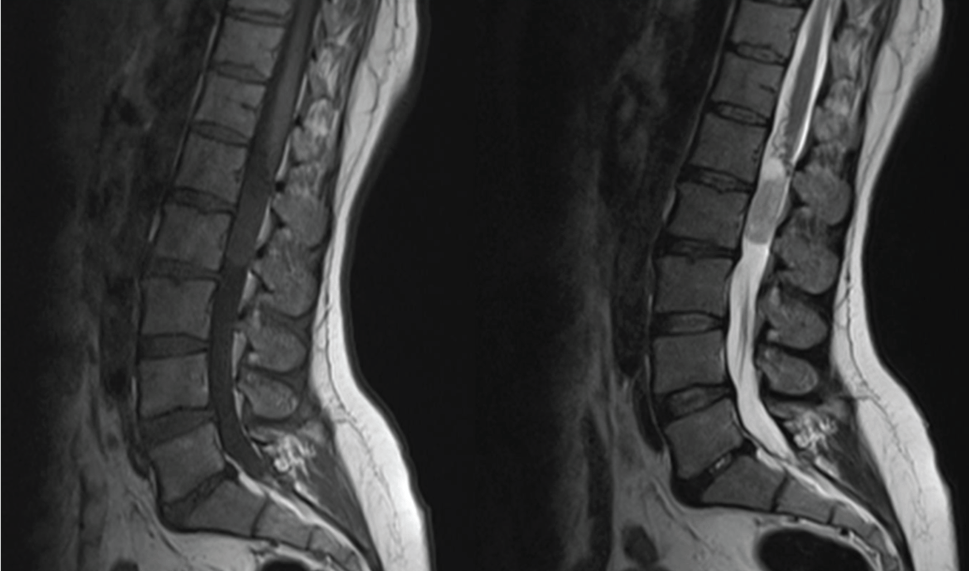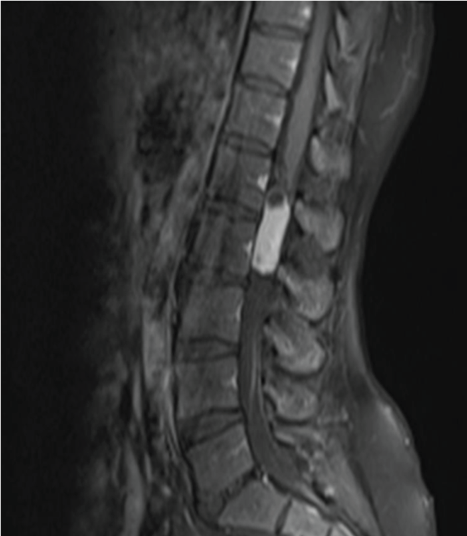Spinal, Cystic meningioma, MRI
A 41-year-old woman was admitted to our department presented with a 1-year history of persistent weakness and progressive numbness in the left lower limb. MRI revealed that there was a well-circumscribed intraspinal extradural lesion at L1 and L2 vertebral levels (Figure 1). The lesion was isointense on T1- and T2-weighted images and it was shown strongly enhancing except a small nodular cystic component in superior part of the lesion (Figure 2). The patient was operated and histopathological studies confirmed the mass to be a meningioma.
Cystic spinal meningioma is a rare form of spinal meningiomas. They are easily confused with other tumors with cyst formation and have been seldom reported in the literature [1-3]. Spinal meningiomas are common extra-axial solid lesions with distinguishing features, and most of them have a thoracic localization [1]. The lesions tend to be isointense on T1- and T2-weighted images, enhancing strongly after administration of contrast agent. Cystic spinal meningiomas with a typical features complicate the imaging work up and cannot be easily identified on MRI due to their rarity [3]. This type of clinical entity should be considered in the differential diagnosis of intraspinal extradural neoplasms.
None.
None.

Figure 1: T1 and T2 weighted images show isointense well-circumscribed intraspinal extradural lesion. There is a small nodular cystic component in superior part of the lesion.

Figure 2: Intravenous contrast injection with fat sat T1 weighted image shows strongly enhancement of the lesion except a small nodular cystic component in superior part.